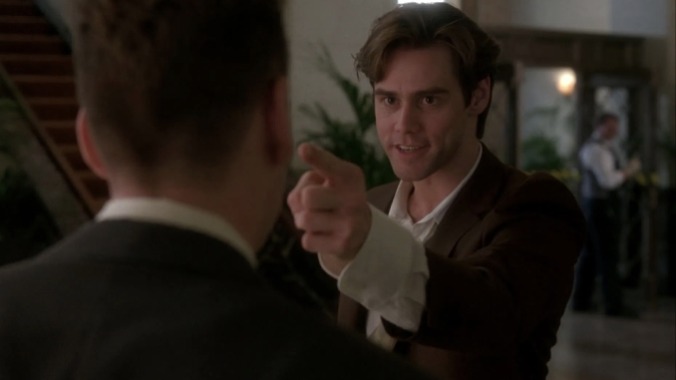The Mask at 30: How Jim Carrey Became More than a Cartoon

Hollywood didn’t quite know what to do with Jim Carrey. The rubber-faced comedian could leave an impression in a supporting role like in Earth Girls Are Easy or with his demented recurring character “Fire Marshall Bill” on In Living Color, but was he really a leading man? Could he carry a comedy if all he did was make funny faces? But 1994 was where everything clicked together for Carrey thanks to the lineup of Ace Ventura: Pet Detective, Dumb and Dumber and The Mask. For adolescent boys of that era (like me), Carrey was a god, and a man talking through his butt was the height of comedy. But looking back 30 years later, we can see that it was not only The Mask, but the man behind the green face that cemented Carrey as someone who could work within a traditional leading man mold.
In The Mask, Carrey plays Stanley Ipkiss, a self-proclaimed “nice guy” (not considered the major red flag in 1994 it would be today) who can’t catch a break. His landlady is mean to him, his mechanics take advantage of him, and he seems doomed to a life of sad anonymity in the fictional Edge City. When he thinks he sees a man drowning, Stanley rushes into the bay to save him, only to discover that it’s a pile of trash with a strange mask on top. Stanley brings the mask home, and when he tries it on, it transforms him into a live-action cartoon, his id come to life to wreak havoc and live out the fantasies that Stanley is too timid to pursue.
If you look at Ace Ventura and the character of The Mask (and even a bit of Dumb and Dumber’s Lloyd Christmas), you see that Carrey excels at playing over-the-top cartoon characters. The Mask director Chuck Russell even remarked that they were able to ease up on the VFX budget simply because Carrey could manipulate and contort his face in such extreme ways that they could let his expression and the makeup do the work. Carrey is able to still manipulate a face housing giant false teeth, so that every time The Mask exits a scene he has a little bit of a jaw wiggle as a signature, giving him an even more Looney Tunes-like appeal.
-

-

-

-

-

-

-

-

-

-

-

-

-

-

-

-

-

-

-

-

-

-

-

-

-

-

-

-

-

-

-

-

-

-

-

-

-

-

-

-








































